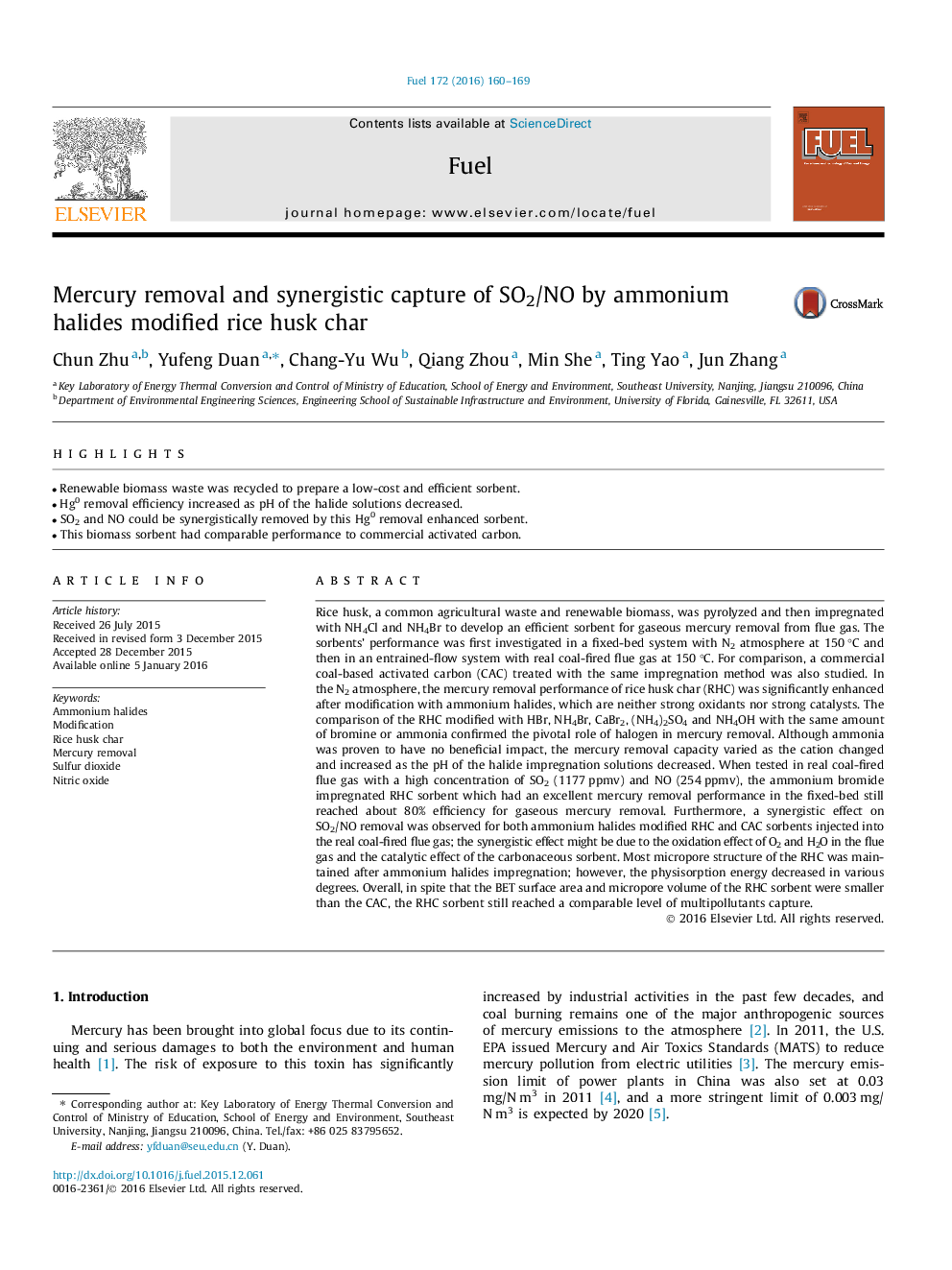| کد مقاله | کد نشریه | سال انتشار | مقاله انگلیسی | نسخه تمام متن |
|---|---|---|---|---|
| 205197 | 461100 | 2016 | 10 صفحه PDF | دانلود رایگان |

• Renewable biomass waste was recycled to prepare a low-cost and efficient sorbent.
• Hg0 removal efficiency increased as pH of the halide solutions decreased.
• SO2 and NO could be synergistically removed by this Hg0 removal enhanced sorbent.
• This biomass sorbent had comparable performance to commercial activated carbon.
Rice husk, a common agricultural waste and renewable biomass, was pyrolyzed and then impregnated with NH4Cl and NH4Br to develop an efficient sorbent for gaseous mercury removal from flue gas. The sorbents’ performance was first investigated in a fixed-bed system with N2 atmosphere at 150 °C and then in an entrained-flow system with real coal-fired flue gas at 150 °C. For comparison, a commercial coal-based activated carbon (CAC) treated with the same impregnation method was also studied. In the N2 atmosphere, the mercury removal performance of rice husk char (RHC) was significantly enhanced after modification with ammonium halides, which are neither strong oxidants nor strong catalysts. The comparison of the RHC modified with HBr, NH4Br, CaBr2, (NH4)2SO4 and NH4OH with the same amount of bromine or ammonia confirmed the pivotal role of halogen in mercury removal. Although ammonia was proven to have no beneficial impact, the mercury removal capacity varied as the cation changed and increased as the pH of the halide impregnation solutions decreased. When tested in real coal-fired flue gas with a high concentration of SO2 (1177 ppmv) and NO (254 ppmv), the ammonium bromide impregnated RHC sorbent which had an excellent mercury removal performance in the fixed-bed still reached about 80% efficiency for gaseous mercury removal. Furthermore, a synergistic effect on SO2/NO removal was observed for both ammonium halides modified RHC and CAC sorbents injected into the real coal-fired flue gas; the synergistic effect might be due to the oxidation effect of O2 and H2O in the flue gas and the catalytic effect of the carbonaceous sorbent. Most micropore structure of the RHC was maintained after ammonium halides impregnation; however, the physisorption energy decreased in various degrees. Overall, in spite that the BET surface area and micropore volume of the RHC sorbent were smaller than the CAC, the RHC sorbent still reached a comparable level of multipollutants capture.
Journal: Fuel - Volume 172, 15 May 2016, Pages 160–169